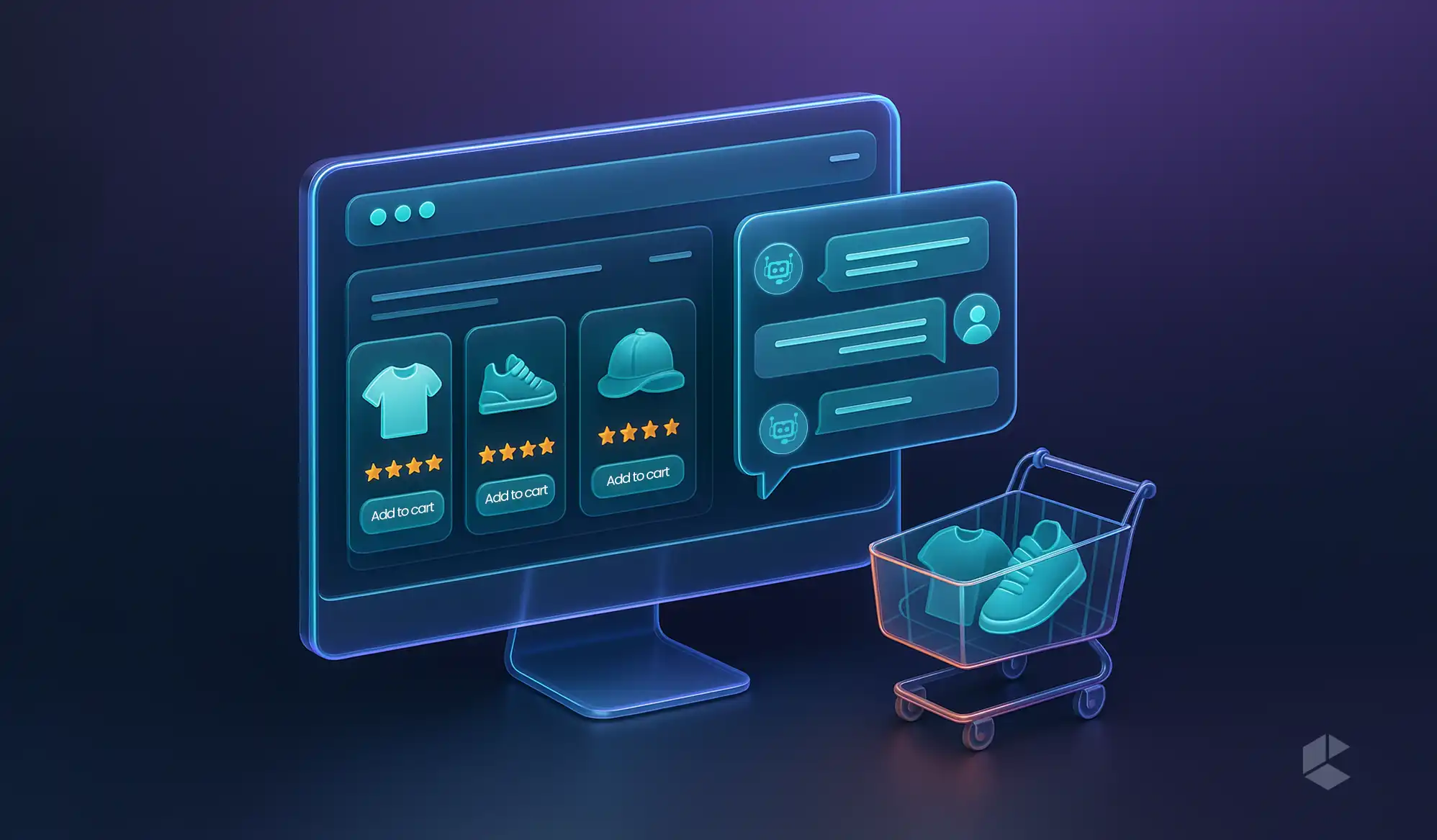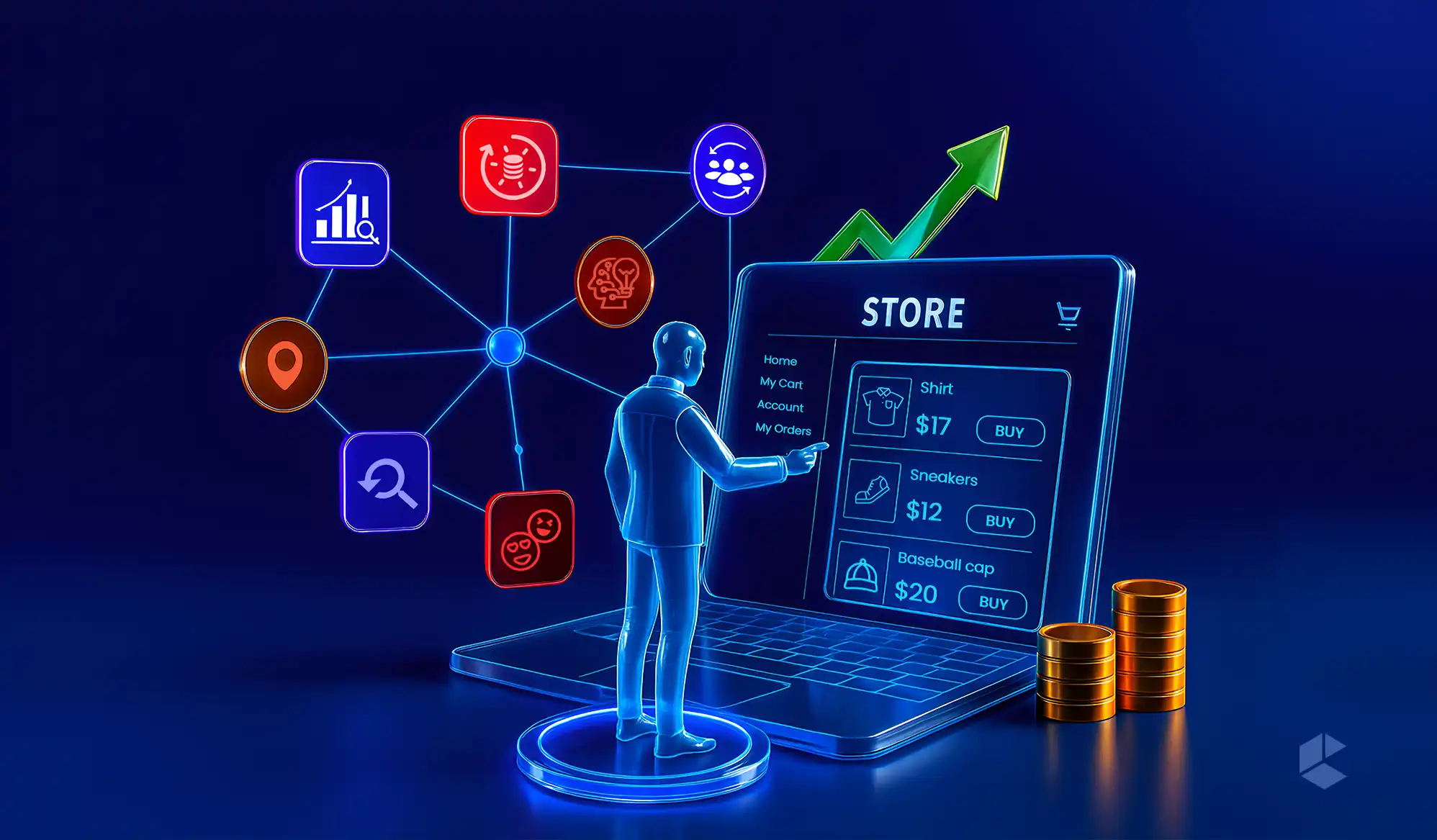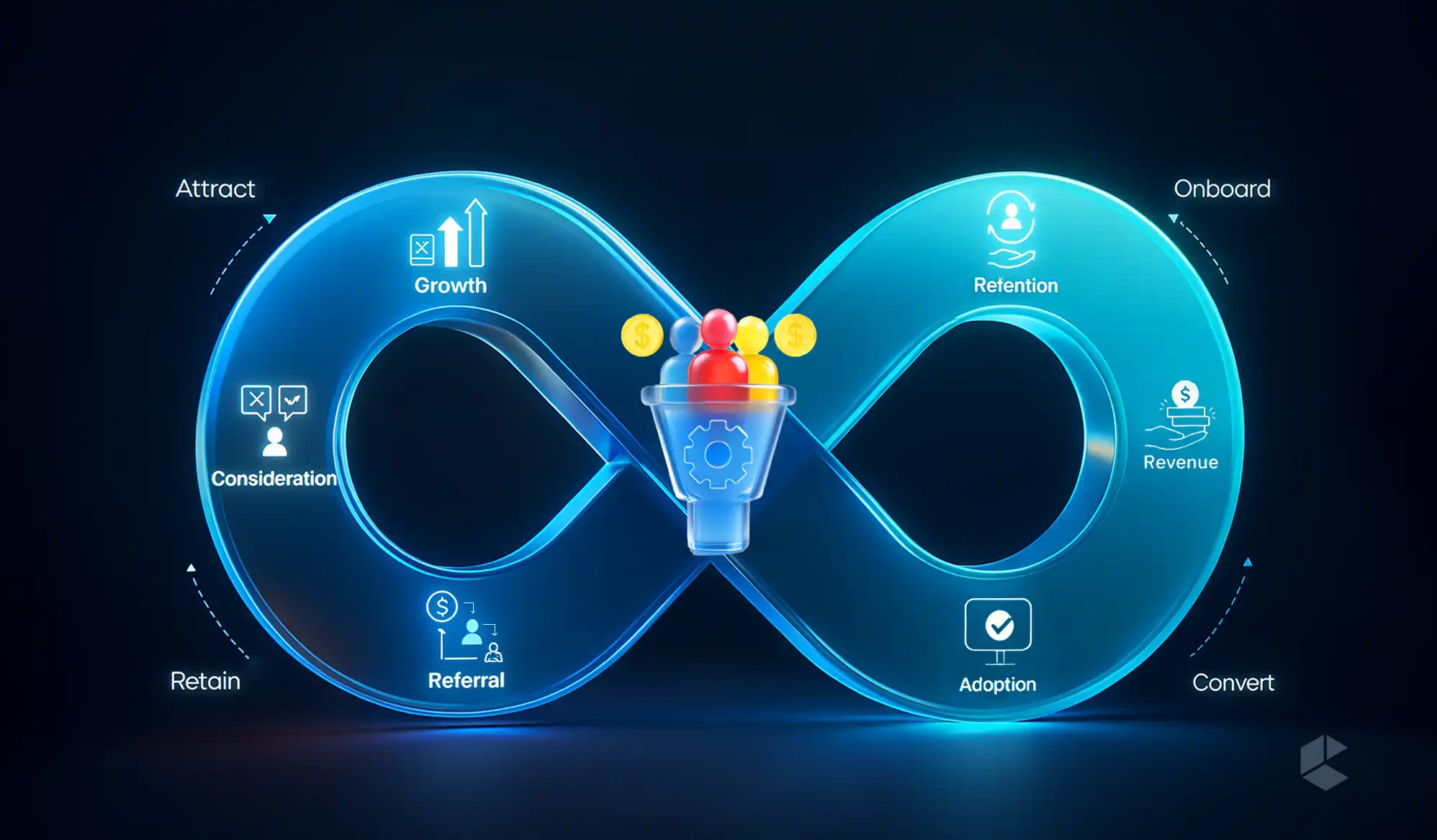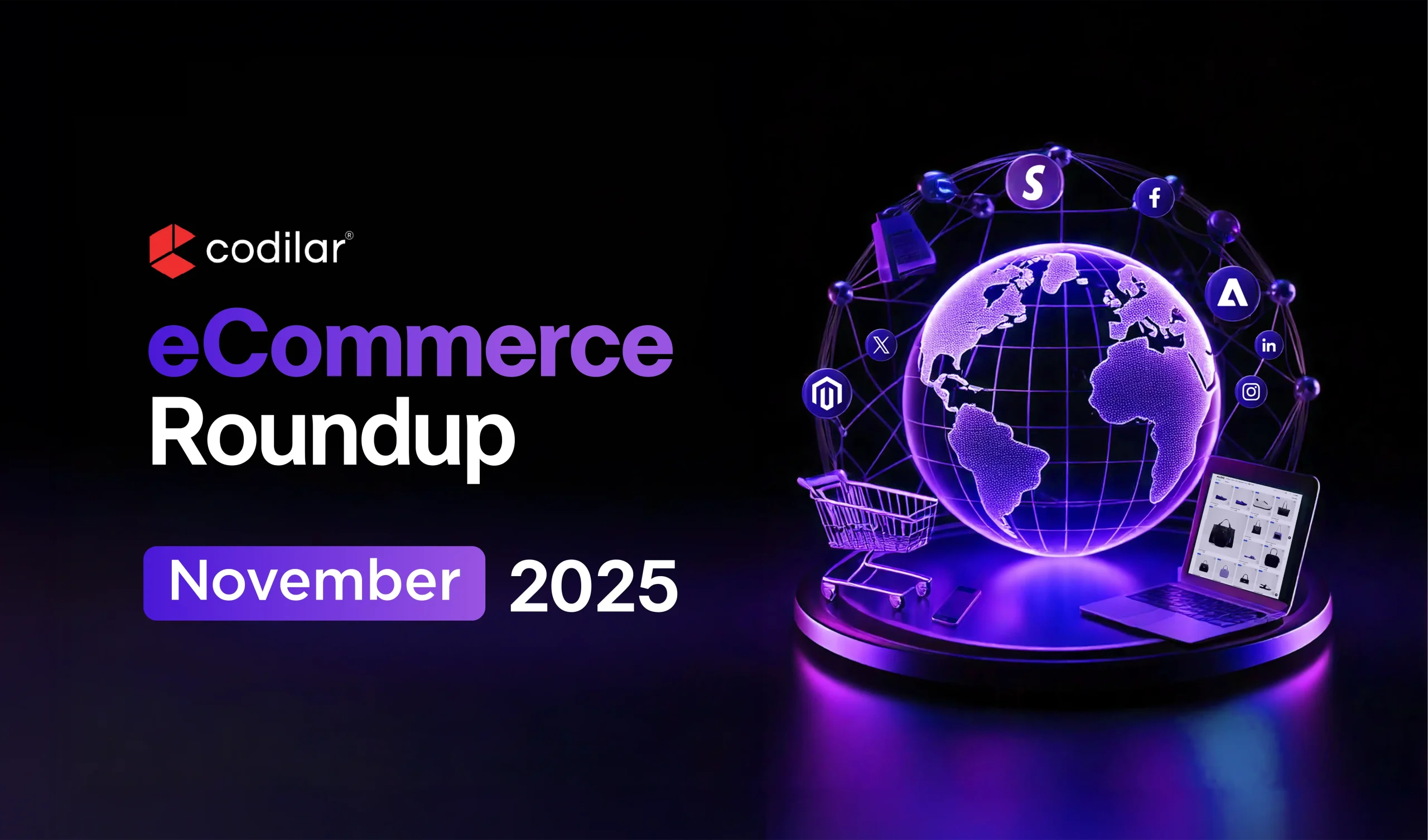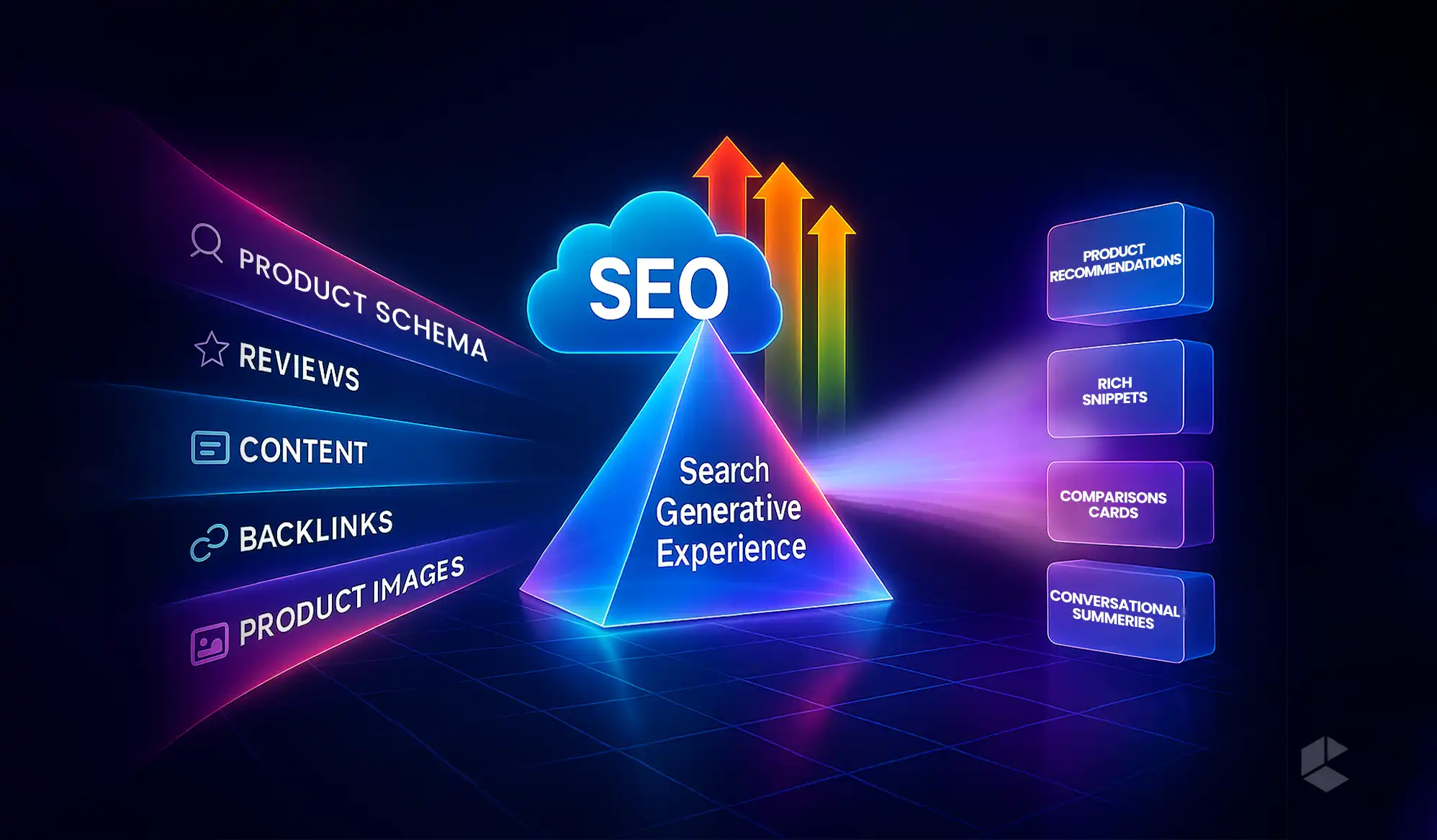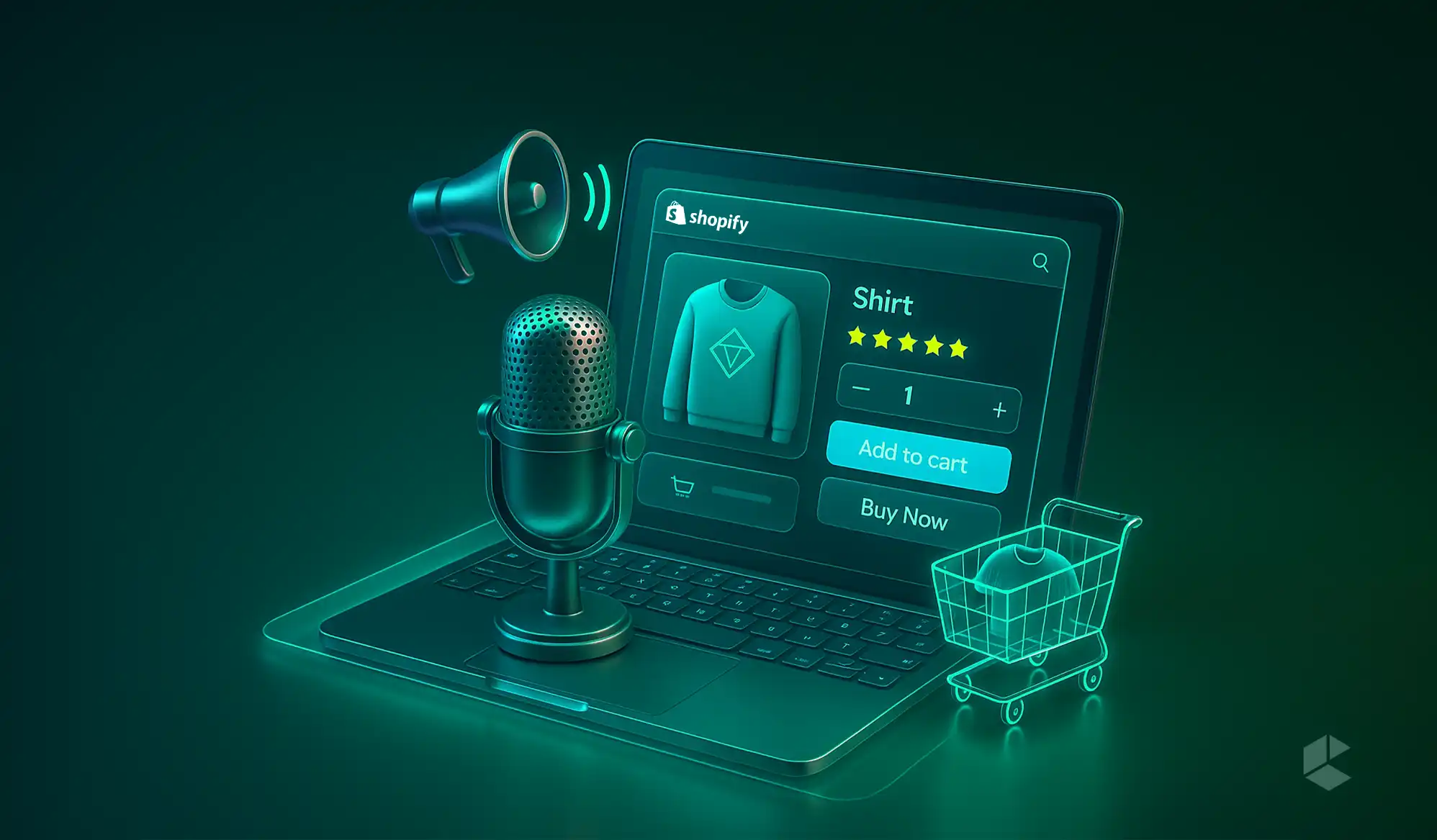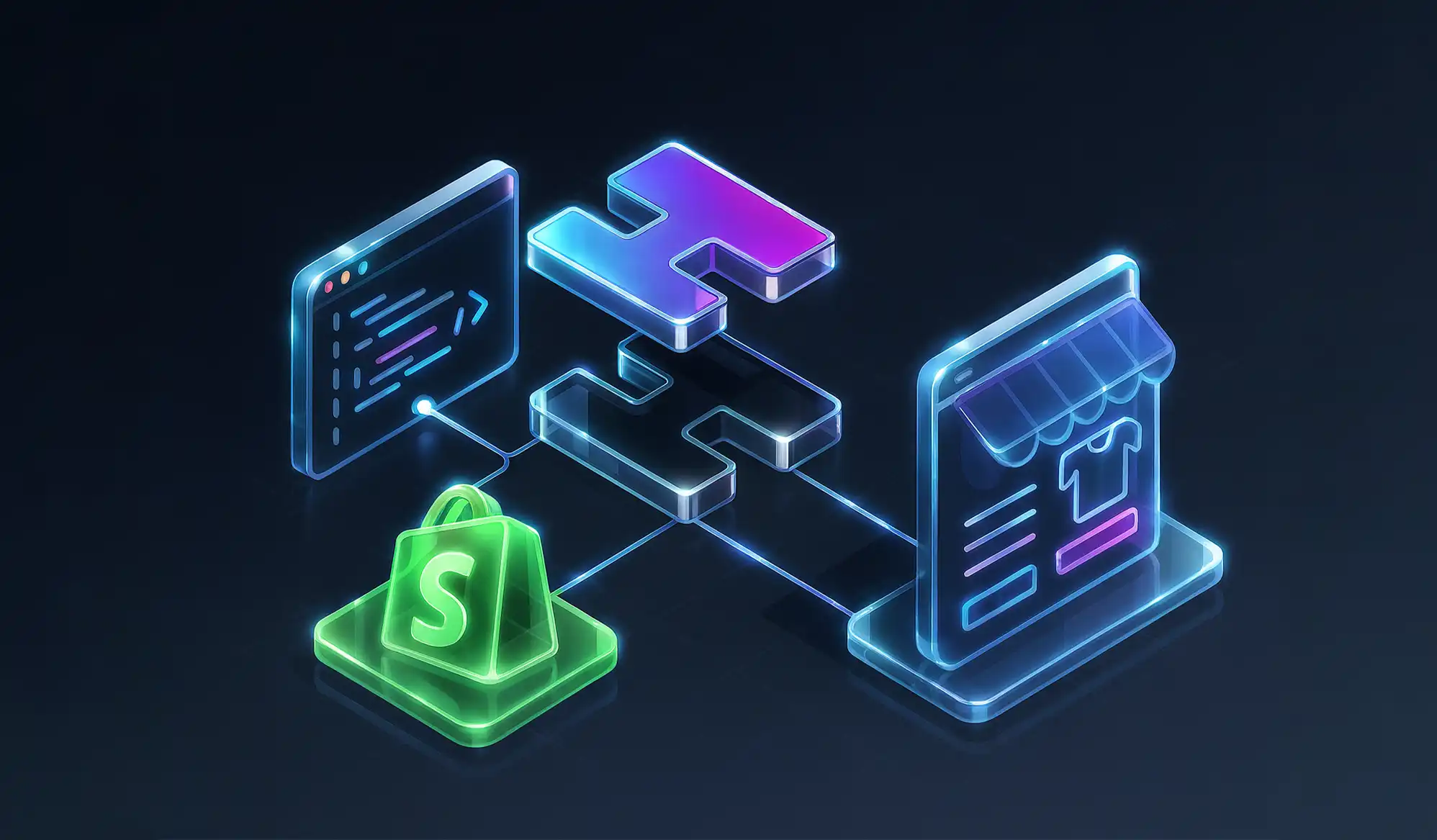- Conversational commerce transforms online shopping into personalized, human-like experiences.
- Chat to Buy unifies discovery, engagement, and purchase in one thread.
- Real-time data integration drives accurate recommendations and seamless transactions.
- Businesses see higher AOV, better reactivation, and fewer support tickets.
- Omnichannel memory ensures customers never restart their shopping journey again.
Shopping online used to be: land on a homepage, search, filter, compare, throw an item in the cart, and pray checkout doesn’t break. Today, when we are surrounded by more machines than humans, people want the human ease of “Hey, got any cool shopping ideas for me?” without the maze.
That’s where conversational commerce, and specifically, Chat to Buy, comes to the rescue! It’s a single-threaded, AI-driven experience that turns chat into the primary sales channel. This is the next revolution of how customers discover, decide, and buy.
Why Conversational Commerce Matters Right Now

Conversations are effortless for people. Typing a short message asking for help is infinitely more natural than navigating endless product lists. Evidence inside the reference shows a clear trend: a growing share of product discovery for ChatGPT users now begins in chat, not on homepages or search bars. Retailers such as Amazon and Zalando are already piloting buying through conversational commerce, which signals this shift isn’t hypothetical; it’s happening.
The typical eCommerce funnel resets with every channel hop. Shoppers lose context, carts disappear, and support teams are swamped with repetitive queries. Conversational commerce removes those frictions by keeping the interaction continuous, context-rich, and sales-focused.
What is Chat to Buy?
Put simply: Chat to Buy is conversational commerce built for omnichannel retail. It’s an AI assistant that:
- Understands intent from natural language (even vague or misspelled asks).
- Remembers customers across channels and return visits.
- Pulls live data, stock, pricing, delivery options, loyalty perks, and converts the conversation into a purchase, all without breaking the thread.
Unlike one-off chat widgets or simple FAQ bots, Chat to Buy is designed to guide the customer from discovery to checkout, and bring back the shopper later, still remembering who they are.
The AI-Powered Buying Journey: Step by Step
A Chat to Buy experience typically unfolds in five phases:
- Discovery: The shopper opens with a simple intent: “Need a jacket for rainy weather,” or “What do I need to build a deck?” Chat to Buy can also proactively start the chat based on behavioral signals.
- Understanding: The AI determines the shopper’s intent even if the request is fuzzy, using past orders, location, preferences, and other context to disambiguate.
- Personalized offer: It recommends curated options, suggests bundles, and surfaces relevant upgrades based on live availability and the customer’s history.
- Assistance and guidance: The AI answers sizing, compatibility, and policy questions, like a knowledgeable salesperson, reducing hesitation and returns.
- Ongoing relationship: Conversations persist across channels, so re-engagements (via WhatsApp, SMS, email) pick up where they left off, enabling seamless repurchases.
Three Layers That Make Chat to Buy Work
Chat to Buy isn’t a single script or widget. It’s built in three connected layers:
1. Foundation Layer: Core Platform & AI
A central AI engine is trained on store data and customer behaviors. According to the reference, the engine handles vague or typo-laden messages with 95%+ accuracy across 100+ languages, remembers past orders and loyalty info, supports 50+ behavioral signals, and pulls live commerce data for accurate recommendations. Conversation logging and privacy controls are built in to measure performance and keep compliance tidy.
2. Features Layer: Your Unique Needs
Every retailer has different KPIs. Chat to Buy adapts: automated re-engagements, tailored bundles, onboarding flows, CDP connections, store-specific rules, all configurable. Notable performance claims in the reference: roughly ~20% reactivation in the first month (notably “10x better than email”), 15–30% higher average order values through natural upselling, and 40–60% reduction in support tickets when routine questions are automated.
3. Interface Layer: Where Customers Meet The AI
The assistant follows customers across the website, WhatsApp, mobile app, SMS, email, voice, kiosks, and in-store devices, preserving memory and context across every stop. Customers can begin on a kiosk, receive a follow-up email, and finish an order on WhatsApp without repeating themselves. That continuous context is the defining advantage.
Real-World Wins: Case Studies
Concrete examples in the reference show measurable uplift.
DIY & Home Improvement Retailer (Nordics)
Challenge: thousands of SKUs, seasonal surges, complex multi-step projects (e.g., “How much wood for 12 sq meters?”). Solution: an AI project assistant powered by Chat to Buy, trained on real customer journeys and connected to live catalog data. Outcome: one continuous conversation guiding entire projects, 5x longer average session time, higher conversion and AOV, and reduced dependency on seasonal staff. That’s the kind of efficiency retailers dream about during peak seasons.
Zorro (Premium Pet Food & Care)
Challenge: DTC brand with quality-focused customers and long reorder cycles wanted to re-engage churned buyers without spammy mass emails. Solution: a WhatsApp sales concierge integrated with CDP and purchase history. Outcome: 32% reactivation of churned customers, seamless repeat purchases via chat, and an impressively quick launch, live in 2 weeks. That demonstrates both speed-to-market and effectiveness.
Business Impact: The Numbers That Matter
Pulling together the reference’s claims paints a compelling ROI picture for Chat to Buy:
- Higher conversion rates from in-the-moment clarity and trust.
- Larger order values (15–30%) thanks to contextual bundles and smart upsells.
- Better reactivation (≈20% in the first month; one client hit 32% for churned customers).
- Fewer returns because customers make better-informed decisions.
- Lower support load (40–60% reduction) as routine queries are automated.
- Rich first-party data captured from conversational signals, a lasting competitive moat for personalization and targeting.
These aren’t vanity metrics. They translate to sustained revenue growth, lower operational costs, and a better brand experience.
Why Legacy Tools Fail, and How Chat to Buy Avoids Those Traps
Most chat solutions on the market are siloed and reactive: website bots, in-app messaging, or support assistants that forget context. Common failings:
- Built for a single channel only.
- Lose context when customers switch platforms.
- Function as basic FAQ tools rather than sales enablers.
- Require brittle DIY setups for integration and maintenance.
- Don’t scale to multi-language, multi-market enterprises.
Chat to Buy addresses these by design: omnichannel memory, deep integrations (store, CRM, PIM, analytics), enterprise-grade localization, and being delivered as a maintained solution rather than a pieced-together project. In short, it’s engineered to be a sales tool first, support tool second.
Practical Considerations for Implementation
If your team is thinking about Chat to Buy, the reference suggests focusing on these practicalities:
- Data integration, the AI’s value depends on live access to catalog, stock, pricing, loyalty, and order history. Make those pipelines reliable.
- Business logic tuning, define upsell rules, bundling logic, and checkout flows aligned with your margins and policies.
- Privacy & compliance, maintain conversation logs with controls and clear privacy settings to stay compliant while measuring impact.
- Multichannel experience design, design initial intents and follow-ups for web, WhatsApp, and kiosks so the same thread feels natural in every UI.
- Training on real journeys, train the assistant on your actual customer conversations, common projects, and product combinations to increase relevance. The DIY example shows how training on real journeys yields better project guidance.
Implementing “Chat to Buy”: The Rollout Blueprint
So you’ve bought into the vision, chat as the new storefront. Great. Now comes the question every eCommerce team faces: “How do we actually pull this off?”
The answer, as the reference lays it out, is surprisingly structured. Chat to Buy isn’t a plug-and-play widget. It’s an orchestrated rollout built around data, training, and measurement.
Let’s break it down into three key parts:
- Technical & data readiness checklist
- Business and performance KPIs
- Conversation flow blueprints for three real-world use cases
1. Technical & Data Readiness Checklist
The foundation of Chat to Buy lies in data connectivity. Without clean, real-time data, the assistant becomes just another chatbot.
Here’s what needs to be wired before you hit “go live”:
a. Integrate the Core Commerce Systems
Your chat assistant should be connected to:
- Product Information Management (PIM): for updated specs, descriptions, and images.
- Customer Data Platform (CDP) or CRM: so the assistant recognizes returning users, remembers preferences, and leverages purchase history.
- Order Management System (OMS): to give real-time order status and return options.
- Inventory and Pricing APIs: to provide live availability and accurate pricing during chat.
Pro tip from the reference: the platform should sync stock and pricing data dynamically, not through nightly batch updates, to avoid recommending out-of-stock items.
b. Train the AI on Real Conversations
Feed the assistant actual transcripts from support, in-store sales, and email interactions.
This allows it to:
- Recognize real customer phrasing (“Need something for monsoon season,” “How many meters do I need for a 12×10 deck?”).
- Understand intent variations and common project language.
- Learn upsell triggers and contextual follow-ups that worked for your sales team.
c. Configure Business Rules
- Define upsell logic (complementary products, bundles, loyalty perks).
- Set project-based logic (for DIY or fashion, guide-step conversations).
- Configure handover logic, when to involve a live agent or store associate.
d. Enable Privacy and Compliance Settings
The reference emphasizes privacy logging and consent tracking. Make sure:
- Every chat is stored securely with opt-in consent.
- Customer identifiers are hashed or anonymized where necessary.
- Data access complies with your regional privacy laws (GDPR, etc.).
e. Multichannel Activation
Plan where Chat to Buy will live:
- Website and mobile app (as default entry).
- WhatsApp or SMS for reactivation and post-purchase.
- In-store kiosks or tablets for guided selling.
Ensure cross-channel memory is enabled; that’s the real differentiator. A user should start a conversation on a kiosk and continue on WhatsApp without reintroducing themselves.
2. KPIs to Measure Chat to Buy Success
If you can’t measure it, you can’t improve it. The reference document outlines several clear KPIs that separate vanity metrics from business value.
a. Reactivation Rate
- Measure the percentage of previously inactive customers re-engaged via chat.
- Expect a ~20% reactivation rate in the first month (some brands achieved 32% in early pilots).
b. Average Order Value (AOV) Uplift
- Track cart sizes before and after implementation.
- Benchmarks: 15–30% AOV lift due to smarter bundling and personalized upsells.
c. Conversion Rate
- Track how many chat interactions end in a purchase (directly or assisted).
- You should see a steep increase because Chat to Buy reduces indecision by offering contextual guidance.
d. Support Load Reduction
- Quantify the drop in repetitive queries reaching human agents.
- Expect 40–60% reduction in low-complexity support tickets.
e. Return Rate
- Fewer misinformed purchases mean fewer returns.
- Measure this quarterly to capture the trend after the AI has matured.
f. Session Time & Engagement Depth
- The DIY case saw a 5x longer session time because the chat acted as a guided project planner.
- The longer people stay engaged in chat, the higher their likelihood of purchase.
3. Sample Conversation Flow Blueprints
Now for the fun part, how Chat to Buy actually talks in the wild.
Here are three flow designs adapted from the reference document’s examples.
Use Case 1: DIY / Home Improvement, “Project Planner” Flow
User Goal: Plan a home project, buy all necessary materials.
Challenge: Customers often don’t know what they need or how much.
Flow Example:
- Customer: “I’m building a 12 square meter deck, what do I need?”
- Chat to Buy: “Got it! Would you like a standard or weatherproof setup?”
- Customer: “Weatherproof.”
- Chat to Buy: “Perfect. You’ll need approx. 35 planks of treated wood, screws, base supports, and sealant. Should I add these to your cart or adjust based on budget?”
- Customer: “Adjust by budget, around ₹12,000.”
- Chat to Buy: “Done! Here’s a bundle that fits your budget. Estimated delivery by Friday. Proceed to checkout?”
This mirrors the reference’s Nordic retailer case, where the AI guided users through multi-step projects, resulting in 5x session time and higher AOV.
Use Case 2: Fashion Retail, “Personal Stylist” Flow
User Goal: Discover and purchase seasonal outfits.
Challenge: Customers are overwhelmed by options.
Flow Example:
- Customer: “I need an outfit for a winter wedding.”
- Chat to Buy: “Formal or semi-formal?”
- Customer: “Semi-formal.”
- Chat to Buy: “Got it. Based on your size M and past orders, here are 3 curated looks. Want me to suggest matching shoes?”
- Customer: “Yes, please.”
- Chat to Buy: “These loafers match perfectly, currently 10% off. Should I apply your loyalty points and complete checkout?”
This demonstrates real-time personalization and instant checkout, the type of cross-selling that fuels the 15–30% AOV boost mentioned in the document.
Use Case 3: FMCG / Replenishment, “Smart Reorder” Flow
User Goal: Reorder frequently used products easily.
Challenge: Traditional email reminders are ignored; customers churn.
Flow Example (Zorro case adaptation):
- Chat to Buy (WhatsApp): “Hi Alex! It’s been 30 days since your last pet food order. Should I restock the same 5kg bag?”
- Customer: “Yes, go ahead.”
- Chat to Buy: “Done. Same address and payment method?”
- Customer: “Yes.”
- Chat to Buy: “Perfect. Order placed! I’ll notify you when it ships.”
This hands-free repurchase system is what drove 32% churned customer reactivation in the Zorro example.
4. Tips for a Smooth Launch
- Start with a single high-intent use case (like replenishment or guided projects) before scaling to all categories.
- Involve merchandisers early. Their expertise is crucial for realistic bundling logic.
- Monitor chat transcripts manually during the first few weeks, fine-tune phrasing, fallback responses, and tone.
- Train the assistant on regional language nuances. The platform supports 100+ languages, but you’ll still want tone calibration.
- Set feedback loops. Use customer satisfaction prompts (“Was this helpful?”) to continuously improve the model.
5. The Gradual Evolution: From Chat to Buy → Chat to Own
The reference hints at an exciting trajectory: once customers start buying in chat, the next step is retention through conversational loyalty.
Imagine the same thread managing returns, upgrades, or service subscriptions, all from one familiar interface. That’s the next evolution: Chat to Own.
Pitfalls You Should Avoid
- Treating chat like a support tool, if you stop at product suggestions and FAQs, you’ll miss the commerce potential. Conversations must be structured to guide purchases.
- Ignoring cross-channel memory, failing to carry context across channels means repeated questions and frustrated shoppers.
- Not measuring the right KPIs, beyond clicks, track reactivation, AOV, support reduction, and repeat purchase rates.
- Overcomplicating setup, bespoke setups that break easily drain teams. Prefer a delivered, maintained solution that scales.
What Customers Actually Get from Chat to Buy
From the shopper’s side, Chat to Buy feels like having a helpful assistant who:
- Knows their order history and preferences.
- Answers product and compatibility questions in real time.
- Suggests thoughtful bundles (no spammy hard-sells).
- Lets them re-order or finish purchases across channels without repeating themselves.
That human-feel matters. When conversations feel helpful and efficient, customers buy, and they come back.
The Future Roadmap for Conversational Commerce (2026 and Beyond)
Conversational commerce is moving from reactive chats to proactive, predictive relationships. By 2026 and beyond, Chat to Buy will evolve into a full-cycle system that not only sells but manages ownership and loyalty. Key shifts ahead include:
- Chat to Own: Conversations will extend beyond checkout to include reorders, returns, and warranties.
- Predictive AI: Systems will anticipate needs before users ask, offering restocks, upgrades, or new product suggestions.
- Unified Experience: Every touchpoint (web, WhatsApp, in-store) will sync into one continuous thread.
- Personalized Engagement: Recommendations will be shaped by behavior, mood, and previous chat tone.
- Autonomous Commerce: AI will handle entire transactions, from cart to confirmation, with minimal human input.
Final Thoughts
The reference positions Chat to Buy as the biggest shift since mobile in eCommerce. That’s a strong claim, but the elements are all there: better discovery, frictionless personalization, measurable business uplift, and the ability to own first-party conversational data. If your eCommerce strategy still treats chat as an add-on, you’re leaving a high-conversion channel on the table. If you treat it as the spine of the buying journey, you’re building a competitive moat: fewer returns, higher AOV, better reactivation, and a customer experience that actually resembles how humans prefer to shop, by talking.
FAQs
Chat to Buy is an AI-driven conversational commerce system that lets customers discover, compare, and purchase products directly through chat interfaces like WhatsApp or in-app messengers.
It provides real-time, personalized assistance, guiding users from discovery to checkout within one conversation, eliminating navigation friction and creating a more natural, human-like shopping journey.
Retailers see higher conversion rates, 15–30% increased order values, 20% customer reactivation, and 40–60% fewer support tickets through AI-driven conversations and personalized buying experiences.
Unlike scripted bots, Chat to Buy uses AI to understand intent, recall previous interactions, manage real-time stock, and complete transactions across multiple channels without losing context.
Because customers now prefer quick, natural conversations over form-filling or browsing. Conversational commerce offers instant answers, tailored recommendations, and frictionless checkout, boosting satisfaction and retention.
